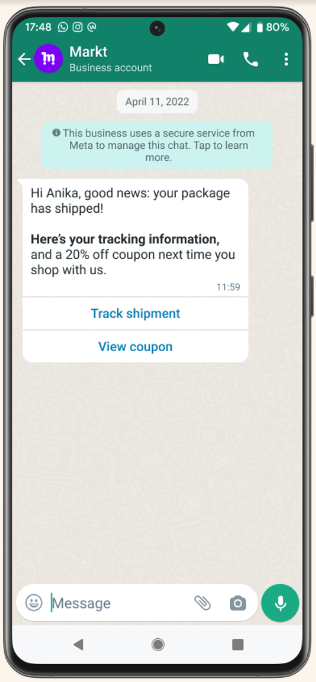This article covers some examples that show how WhatsApp charges for a conversation.
Before going through this article, we recommend to first read the article on WhatsApp conversation-based pricing.
Every time a WhatsApp Template message is delivered, it incurs conversation costs unless it is sent in a conversation of the same category. For example, if a Utility template is delivered during a Service conversation, a separate Utility conversation is opened for 24 hours from the time the Utility template is delivered.
If a Utility template is delivered during an open Utility conversation, no new Utility conversation is opened or new costs incurred. Below are several examples to illustrate how these conversation-based costs work.
Example 1:

In this example, we see the opening of a marketing conversation within an existing Service conversation.
A service conversation is opened at 09:31 when the company's response arrives at the customer. This conversation is still open when the company sends a Marketing template at 04:30, opening a separate Marketing conversation.
In this example, the company pays for one Service conversation and one Marketing conversation.
Example 2:

In this example, a utility conversation is opened within an existing marketing conversation.
At 03:40, a Marketing conversation is opened when a Marketing template is delivered to the customer. Later, if the Marketing conversation is still open, a Utility template is delivered at 06:00, opening a separate Utility conversation.
In this example, the company pays for one Marketing conversation and one Utility conversation.
Example 3:

In this example, the same type of template is sent within an existing Utility conversation.
A Utility conversation is opened at 09:00. While the Utility conversation is still open, another Utility template is delivered at 11:00. In this situation, no new Utility conversation is started because the template category is the same as the ongoing conversation category.
In this example, the company pays for one Utility conversation.
Example 4:

In this example, a WhatsApp template is sent that contains both Marketing and Utility content.
A template that contains both Marketing and Utility content will always be categorized as a Marketing template.
Refer to Meta's WhatsApp template guidelines for more information.
